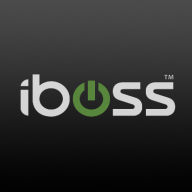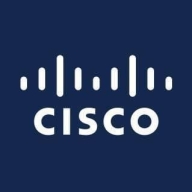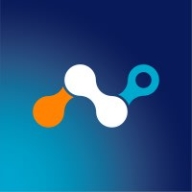


Netskope and Cisco Umbrella compete in the security solutions domain, each offering unique benefits. Netskope gains favor for its pricing and support, making it attractive to cost-sensitive users. In contrast, Cisco Umbrella is favored for its extensive features, justifying its higher cost in user reviews.
Features: Netskope offers expansive SaaS governance with its CASB, supporting over 57,000 cloud apps and providing regulatory compliance ratings. Its KSP CASB and DLP features alongside real-time protection enhance security policy enforcement. Cisco Umbrella excels in integration capabilities, DNS protection, and delivering comprehensive threat protection through a reliable security framework.
Room for Improvement: Netskope can improve policy integration in its DLP module, enhance compatibility with other platforms, and refine cloud firewall features. Cisco Umbrella could expand third-party integrations, lower pricing, and enhance user interface, reporting, and support responsiveness.
Ease of Deployment and Customer Service: Netskope is praised for its public cloud deployment, though users suggest improvements in technical support and service integration. Cisco Umbrella also receives commendations for ease of cloud deployment but needs simplified configuration processes and better cross-platform support.
Pricing and ROI: Netskope offers competitive pricing compared to similar solutions like Zscaler, perceived as costly by small businesses but provides a favorable ROI by ensuring efficient threat management. Cisco Umbrella offers solid value with integrated security layers, although its pricing can be a hurdle for budget-sensitive users.
| Product | Market Share (%) |
|---|---|
| Cisco Umbrella | 11.9% |
| Netskope | 14.5% |
| iboss | 2.1% |
| Other | 71.5% |



| Company Size | Count |
|---|---|
| Small Business | 6 |
| Midsize Enterprise | 6 |
| Large Enterprise | 5 |
| Company Size | Count |
|---|---|
| Small Business | 49 |
| Midsize Enterprise | 30 |
| Large Enterprise | 51 |
| Company Size | Count |
|---|---|
| Small Business | 15 |
| Midsize Enterprise | 9 |
| Large Enterprise | 25 |
Iboss offers a comprehensive cloud-based security platform valued for its scalability and autonomous features, ensuring robust security with easy deployment and management capabilities.
Renowned for its robust security architecture, Iboss integrates seamlessly within diverse networks, delivering efficient granular filtering and advanced content categorization. Its single pane of glass console provides ease of management, allowing rapid scalability suitable for rapidly deploying environments. Operates in BYOD setups due to inline filtering without device installation. Integration with cloud-based applications enhances user control, and features like SASE, SSL inspection, and ChatGPT risk protection stand as highlights. Despite its strengths, users have pointed out areas for enhancement like direct navigation in reports, SSL decryption, and better cloud integration while having room to improve data loss prevention.
What are the most important features of Iboss?The usage of Iboss spans educational institutions, specifically K-12, to enforce internet policies, protect data, and support remote work environments. It provides web filtering and security frameworks to ensure safe browsing. Its platform-as-a-service model offers flexibility for both cloud-based and on-premises requirements, integrating seamlessly to deliver enhanced security features suitable for various deployment needs including zero trust, CASB, and network security for work-from-home setups.
Cisco Umbrella delivers rapid DNS security with over 30,000 customers, providing outstanding threat protection and handling more than 600 billion requests daily. It's recognized for high threat efficacy in the SSE domain and integrates elements like SWG, ZTNA, CASB, and more.
Cisco Umbrella is renowned for its effective DNS-layer security against ransomware and phishing. It offers flexible content filtering and integrates seamlessly with existing networks while providing single-pane-of-glass management for centralized monitoring. Its robust threat intelligence and customizable policies are central to its appeal. Users highlight room for improvement in areas like WHOIS data inclusion, malware enhancement, and reporting analytics. Integration with other threat feeds and better client support are requested for more comprehensive coverage.
What are the key features of Cisco Umbrella?
What should users expect in reviews about Cisco Umbrella?
Industries implement Cisco Umbrella primarily for DNS-level security, web filtering, and protecting remote employees. It strengthens cybersecurity frameworks by blocking malware and avoiding access to harmful sites. The tool is widely integrated with Active Directory and Cisco Meraki, providing consistent internet security for employees.
Netscope is a Secure Access Service Edge (SASE) platform that includes core products such as Cloud Access Security Broker (CASB) and Security Service Edge (SSE).
Netskope CASB is a cloud access security broker tool that allows you to adopt cloud applications and services without sacrificing security. The solution makes it possible to manage the movement of sensitive data between cloud app instances and in the context of app risk and user risk. With Netskope’s industry-leading cloud security solution, you can also prevent sensitive data from being exfiltrated from your environment by risky insiders or malicious cybercriminals who have breached your perimeter.
Netskope CASB Features
Netskope CASB has many valuable key features. Some of the most useful ones include:
Netskope CASB Benefits
There are many benefits to implementing Netskope CASB. Some of the biggest advantages the solution offers include:
Reviews from Real Users
Netskope CASB is a solution that stands out when compared to many of its competitors. Some of its major advantages are that it offers great reporting, has a good tracking mechanism, and has a solid Cloud Control feature.
Prerna S., Senior Information Security Analyst II at Workato, says, “[Netskope] CASB has a lot of good features; their reporting and tracking mechanism is amazing.”
PeerSpot reviewer Dima Z., Director at Irangers International Inc., mentions, “The most useful feature of this solution is Cloud Control, which allows me to schedule cloud uploads.”
Syed H., Lead Cloud Security Practice at Vincacyber, states, "I have found the most useful features to be the Web Secure Gateway, CASB, infrastructural service scanning, and Zero Trust."
We monitor all Cloud Access Security Brokers (CASB) reviews to prevent fraudulent reviews and keep review quality high. We do not post reviews by company employees or direct competitors. We validate each review for authenticity via cross-reference with LinkedIn, and personal follow-up with the reviewer when necessary.